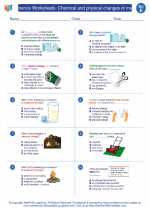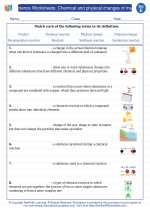Electromagnetic Waves
Electromagnetic waves are waves that consist of oscillating electric and magnetic fields, and they can travel through a vacuum (empty space) as well as through a medium. These waves are produced by the acceleration of electric charges and are characterized by their wavelength, frequency, and energy.
Properties of Electromagnetic Waves
1. Wavelength: The distance between two consecutive peaks or troughs of a wave. It is denoted by the symbol λ (lambda) and is measured in meters.
2. Frequency: The number of complete oscillations of the wave per second. It is denoted by the symbol f and is measured in hertz (Hz).
3. Speed: Electromagnetic waves travel at the speed of light, denoted by the symbol c, which is approximately 3.00 × 10^8 meters per second in a vacuum.
4. Energy: The energy of an electromagnetic wave is directly proportional to its frequency. Higher frequency waves have higher energy.
Types of Electromagnetic Waves
There is a wide range of electromagnetic waves, organized in the electromagnetic spectrum based on their wavelength and frequency. The spectrum includes:
- Radio waves
- Microwaves
- Infrared radiation
- Visible light
- Ultraviolet radiation
- X-rays
- Gamma rays
Applications of Electromagnetic Waves
Electromagnetic waves have numerous practical applications in everyday life and technology, including:
- Communication using radio waves and microwaves
- Heating and cooking using microwaves and infrared radiation
- Medical imaging using X-rays and gamma rays
- Remote sensing and weather forecasting using various wavelengths
- Optical technologies such as lasers and fiber optics for communication
Study Guide Questions
- What are the properties of electromagnetic waves?
- Explain the relationship between wavelength, frequency, and energy of electromagnetic waves.
- List the types of electromagnetic waves in the electromagnetic spectrum and their applications.
- How do electromagnetic waves travel through a vacuum?
- Discuss the importance of electromagnetic waves in modern technology and everyday life.
◂Science Worksheets and Study Guides Fifth Grade. Science Worksheets: Chemical and physical changes of matter

 Worksheet/Answer key
Worksheet/Answer key
 Worksheet/Answer key
Worksheet/Answer key
 Worksheet/Answer key
Worksheet/Answer key
 Vocabulary/Answer key
Vocabulary/Answer key
